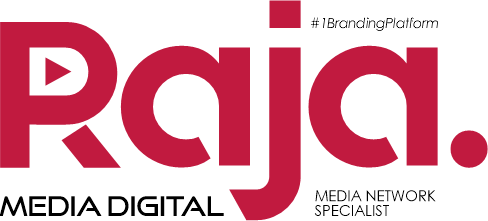In late 2022, the arrival of ChatGPT sparked widespread excitement across multiple industries, with businesses eager to harness the power of AI to enhance productivity. Anurag Garg, founder of Everest PR, was one of many business leaders to embrace the technology, seeing it as a way to keep his boutique PR agency competitive. Garg believed that by integrating ChatGPT into the daily workflow of his 11-person team, tasks like drafting media pitches, generating client ideas, and transcribing meeting notes would be more efficient. However, the excitement around AI soon gave way to frustration as the realities of its use began to emerge.
Instead of streamlining operations, ChatGPT became an unexpected source of stress for the team. Employees quickly found that using the tool required more effort than anticipated. They had to carefully craft prompts for the AI, and then spend additional time verifying its output for errors. Mistakes were common, and every update to the platform meant having to learn new features, which took even more time. “There were too many distractions,” Garg reflected. “The team found that tasks were taking longer, not shorter, because we were relying on AI tools that didn’t deliver the efficiency we had hoped for.”
The challenges didn’t stop with ChatGPT. Garg had also incorporated other AI tools like Zapier for team management and Perplexity for research, believing that a combination of tools would optimize the workflow. Yet, as more AI tools were introduced, the complexity only increased. “There’s an overflow of AI tools in the market,” Garg said. “And no single tool solves all problems. I found myself juggling multiple AI platforms, each with a learning curve. It became overwhelming trying to keep up with which tool to use for which task.”
As a result, what had started as an effort to simplify operations turned into a source of tension for the team. The extra time spent managing and learning AI tools led to a decline in productivity, and stress levels began to rise. The original vision of AI making life easier was rapidly falling apart, as employees felt overburdened by the growing complexity of their tasks. Burnout soon became a concern, with many on the team expressing frustration at the pressure to adopt new technology that wasn’t improving their work experience.
To address the situation, Garg made the decision to scale back AI usage. Instead of mandating that AI be used for every task, he allowed the team to focus on the areas where AI offered clear benefits, primarily in research. “It was a necessary adjustment,” Garg explained. “Now that we’ve scaled back on AI tools, work has become more manageable. The team feels more in control of their tasks, and the overall atmosphere is much better.”
The experience at Everest PR mirrors broader concerns emerging from recent studies on AI’s impact on the workplace. While executives remain enthusiastic about AI’s potential, employees are finding it difficult to meet the rising expectations associated with these tools. According to a survey conducted by freelancer platform Upwork, 96% of executives believe AI will lead to increased productivity. However, 77% of employees reported the opposite, saying that AI tools had actually added to their workload and made tasks more time-consuming. Many workers expressed uncertainty about how to achieve the productivity gains their employers expected, leading to growing concerns about stress and burnout.
For younger workers, the pressures of AI adoption are particularly pronounced. In a separate survey conducted by Resume Now, 87% of workers under the age of 25 said they feared AI would increase their chances of burnout. These younger employees also expressed concern about the impact of AI on work-life balance, with 43% citing it as a negative factor. As AI tools become more prevalent, younger generations are facing the challenge of adapting to new technology while maintaining their previous levels of productivity.
The stress of AI adoption is further compounded by the sheer number of tools workers are now expected to manage. A report from Asana, a work management platform, revealed that employees using six to 15 different apps in the workplace often struggle to keep up with notifications and messages. As the number of apps increases, so does the complexity of managing them. For workers juggling 16 or more apps, efficiency and focus decline sharply, with many reporting that the constant switching between platforms is eroding their ability to maintain momentum.
In certain industries, the challenges posed by AI go beyond just the number of tools being used. Leah Steele, a lawyer turned burnout coach, has seen firsthand how AI is affecting legal professionals. “There’s a push to do more with less,” Steele said. “Law firms are adopting AI to increase productivity, but they’re not taking into account the toll it’s taking on their staff.” Steele’s own experience with AI in the legal field was overwhelming, as her client caseload increased dramatically after the introduction of new technology. This surge in workload, combined with the pressure to quickly learn and master new AI tools, led to feelings of burnout and disconnection from the work she had once enjoyed.
For legal professionals, the introduction of AI is also reshaping their roles in unexpected ways. Many lawyers entered the field to work closely with clients and make a difference in people’s lives. However, as AI takes over routine tasks, lawyers are finding themselves increasingly distanced from the more personal aspects of their work. “It’s not just the volume of work that causes burnout,” Steele noted. “It’s also the loss of connection to the meaningful parts of the job. When technology takes over, it can feel like the work is no longer fulfilling.”
The stress of AI adoption is further amplified by concerns over job security. As automation becomes more advanced, many workers fear that their roles could be replaced by AI. Richard Atkinson, president of the Law Society of England and Wales, acknowledged these concerns, noting that while AI has made some aspects of legal work more efficient, it has also created new challenges. “The legal sector is still adapting to AI tools,” Atkinson said. “Many of these technologies weren’t designed specifically for our industry, and learning how to use them effectively takes time.”
Not all industries, however, view AI as a source of stress. For smaller businesses and startups, AI offers significant advantages. Alicia Navarro, founder of Flown, a platform that supports deep work and focus, believes that AI can be a game-changer for startups with limited resources. “AI is incredibly empowering for small businesses,” Navarro explained. “It allows them to achieve more with fewer resources, but the key is to use AI correctly.” For startups that face tight budgets and limited staffing, AI can provide the leverage they need to compete with larger companies.
As AI continues to reshape the workplace, businesses face the challenge of balancing technological advancement with employee well-being. The promise of increased productivity is tempered by the risks of burnout and stress, as workers struggle to keep up with the pace of change. While AI offers immense potential, its successful integration will depend on thoughtful strategies that prioritize both efficiency and the human experience. For now, the future of work remains a delicate balancing act, where the benefits of AI must be carefully weighed against its unintended consequences.









